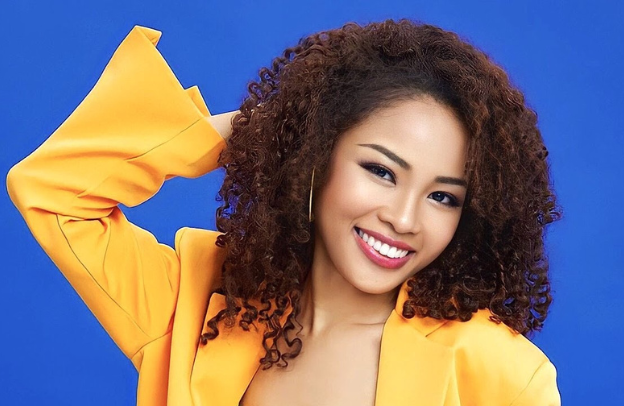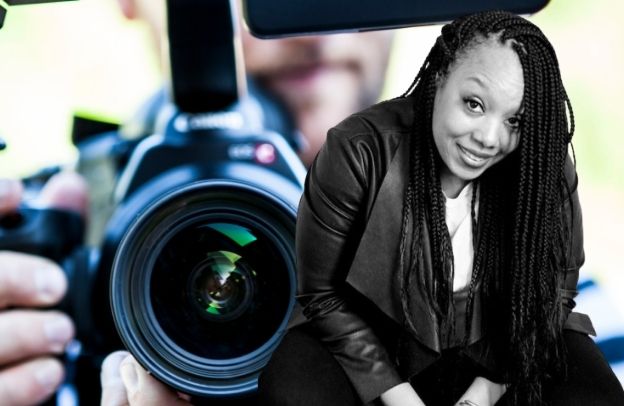Unlocking The Secret Link Between Dance, Culture, Identity, and Human Freedom With Dr Tawanda Chabikwa

When it comes to human expression, few forms captivate and are as powerful as dance. It transcends mere movement; it embodies culture, identity, and the very essence of human freedom. In an exclusive conversation with Dr. Tawanda Chabikwa, Assistant Professor at the University of Texas at El Paso, we embark on a journey of enlightenment to unravel the hidden connections that redefine our understanding of movement.
Want to learn more about storytelling? Start by downloading the first chapter of The Storytelling Mastery.
Dr. Chabikwa, an interdisciplinary artist and scholar, is on a mission to showcase the profound impact of dance, particularly within the African diaspora. His work revolves around Black and Africana dance practices, artificial intelligence, Africana conceptual systems, and practice-based research methodologies.
As part of AI Team 4 Afrika, he embodies the idea that “artificial intelligence is human intelligence augmented” and he encourages more Africans to jump on board to expand their agency. See the full interview below:
Unlocking The Secret Link Between Dance, Culture, Identity, and Human Freedom With Tawanda Chabikwa
At the heart of Dr. Chabikwa’s exploration lies the realization that dance is more than just rhythmic motion—it is a vessel for cultural transmission and preservation.
In this exclusive interview, Dr. Chabikwa will help you understand how African dances remain a repository of knowledge, carrying within them the stories, beliefs, and histories of a people. This is a conversation that many people of African descent, in Europe, America, Canada, and beyond need to pay much attention not.
During the more than two-hour long interview at Obehi Podcast, Dr. Chabikwa was fascinated by Esan traditional dance, “Igbabonelimhin” which he said he had seen on several occasions but never knew the real name. Listening to this in-depth conversation, you will come to understand how through movement, we can communicate narratives that are often beyond the scope of words.
See also Esan History & Tradition – All You Need To Know About The Esan People Of Nigeria
To help you understand the complexities of body movement and the energies within those movements, think about the following two quotes and come up with your own understanding:
- “Man is a microcosm, or a little world, because he is an extract from all the stars and planets of the whole firmament, from the earth and the elements; and so he is their quintessence.” –Paracelsus.
- “The human body is a machine, albeit a very complicated one. The same principles that govern the movements of the stars and planets also apply to the workings of the human body. The microcosm reflects the macrocosm, and vice versa.” – Leonardo Da Vinci.
It’s indisputable that dance serves as a living archive of cultural heritage, embodying the traditions, rituals, and values of diverse communities. From the spirited rhythms of the djembe in West Africa to the graceful gestures of the Akogo in Eastern Uganda, each dance form tells a story that transcends geographical boundaries.
Now, are there more dances among Africans? Of course. Here are some for your reaction:
Popular traditional dances from Africa
Each of the following dances is a unique expression of African traditional culture, originating from various regions across the continent. There are several hundreds of them, these are just to keep you thinking:
Indlamu – Zulu people of South Africa
Originating from the Zulu people of South Africa, Indlamu is a dynamic and powerful dance characterized by rhythmic stomping, intricate footwork, and vibrant costumes. It often accompanies traditional ceremonies, celebrations, and rites of passage, symbolizing strength, unity, and cultural pride among the people.
Igbabonelimhin – Esan People of Nigeria
Within the rich cultural heritage among the Esan People of Nigeria is the Igbabonelimhin dance, a theatrical spring to life as a mesmerizing spectacle highly cherished by the Esan people.
Infused with acrobatic skill and masked mystique, this unique art form transcends mere performance, becoming a true vibrant celebration of tradition and spirituality. Derived from the fusion of ‘Igbabo’—signifying rhythmic clapping—and ‘Elimlin’—evoking the essence of the spirit—Igbabonelimhin embodies a profound reverence for the unseen forces that animate the human experience.
As dancers intertwine graceful movements with complex acrobatics, the audiences are transported to a realm where the ethereal and the earthly converge. Is at this point that they all partake in the ancient ritual of Igbabonelimhin in the Esan language which can literally be translated as “clapping for the spirit” in English.
Adumu – Maasai people of Kenya and Tanzania
Adumu, also known as the “jumping dance,” is performed by the Maasai people of Kenya and Tanzania. It is a ritual dance traditionally performed by young Maasai warriors as a display of strength, agility, and courage.
The dancers form a circle and take turns leaping high into the air, showcasing their prowess and bravery.
Agbadza – Ewe culture in Ghana’s Volta Region
Originating from the ancestral rhythms of conflict, Agbadza is a vibrant expression of Ewe culture, transcending its martial roots to become a cherished form of communal celebration.
Evolving from the ancient Atrikpui war dance, Agbadza thrives as a hallmark of the Ewe people’s artistic heritage. It notably flourished amidst the spirited festivities of the Hogbetsotso Festival in Ghana’s Volta Region.
Akogo dance – Eastern Uganda
Akogo is an emblem of the Teso people’s culture in Eastern Uganda. It characterizes the beautiful convergence of tradition and rhythm. Embraced by both genders, this traditional dance captivates with synchronized movements that echo the melodic pulse of its percussion instrument.
Crafted from bamboo tubes of diverse lengths, the Akogo infuses the dance with its distinctive cadence, inviting participants and spectators alike to immerse themselves in the timeless allure of Teso heritage.
Atilogwu dance – Igbo ethnic group of Nigeria
Atilogwu dance lights up the cultural background of Nigeria’s Igbo ethnic group. The dance is a dynamic proof of youthful exuberance and spirited expression.
Rooted in tradition with contemporary energy, this captivating dance emphasizes vigorous body movements and daring acrobatics. Translating to “has magic, and mystical powers” in the Igbo language, the very essence of Atilogwu embodies an enchanting allure that bewitches both participants and spectators alike. It weaves a spellbinding narrative of cultural richness and rhythmic enchantment.
Each of these dances embodies the rich cultural heritage, traditions, and values of the African people. They serve as a testament to the diversity and vitality of African traditional dance and cultural heritage.
But dance is not only a reflection of culture, it also is a catalyst for the formation and affirmation of identity. What does that even mean? Let’s find out.
Dance as an affirmation of identity
In the African diaspora, where communities are often displaced and fragmented, dance can become a means of reconnecting with one’s roots and asserting one’s sense of self. Dr. Chabikwa states that it is a form of resistance against erasure and unfair assimilation, a declaration of presence and belonging.
According to Dr. Chabikwa, there is a deep message within the message in a dance. “The connection of freedom to dance is very important to understand because we must appreciate that slavery and colonization did not just happen as an idea. What happened in those situations implicated our bodies directly. It incarcerated our bodies, literarily and metaphorically. Our bodies became objects under the control of somebody else,” he said to Obehi Ewanfoh during the interview.
Through his research, Dr. Chabikwa has witnessed firsthand the transformative power of dance in fostering a sense of agency and empowerment among marginalized communities.
So, he encourages Africans and Africans in the diaspora that in reclaiming their ancestral dances, they can reclaim agency over their bodies and narratives.
See also African Belief Systems And Its Influence On The Diaspora Community.
This is how they can assert their right to exist on their own terms, free from the constraints of colonialism and Western oppression, which still come in different forms today.
Dancing for freedom, Dr. Chabikwa insist
Dr. Chabikwa emphasizes the role of dance in promoting human freedom and liberation. He says that dance is inherently liberatory, allowing us to break free from the confines of everyday life, transcend limitations, and embrace different possibilities.
In its purest form, dance is an expression of the boundless potential of the human spirit. Let me explain more if you find that difficult to understand. Here are three ways dance can be a powerful expression of freedom:
Physical Liberation:
Dance allows individuals to break free from physical constraints and express themselves through movement. In the act of dancing, people can transcend limitations imposed by society, culture, or their own bodies.
Whether through fluid movements, dynamic gestures, or spontaneous improvisation, dance enables individuals to explore and celebrate their physicality, asserting their autonomy and agency over their bodies.
Emotional Release:
Dance serves as a medium for emotional expression and release. It provides a safe space for individuals to channel their emotions—whether joy, sorrow, anger, or passion—into movement.
Through dance, people can express feelings that may be difficult to articulate verbally, allowing them to process and release pent-up emotions. This emotional catharsis fosters a sense of liberation, enabling individuals to experience a profound sense of release and relief.
Cultural Affirmation:
Dance serves as a means of affirming cultural identity and heritage. For marginalized communities, particularly those impacted by colonialism, oppression, or discrimination, dance becomes a tool for reclaiming and celebrating their cultural traditions.
By practicing and preserving traditional dance forms, individuals can assert their right to exist on their own terms, resisting assimilation and affirming their cultural autonomy. In this way, dance can become a powerful expression of freedom, embodying the resilience, pride, and defiance of oppressed peoples.
As we delve deeper into our conversation, Dr. Chabikwa shares his vision for the future—a future where dance serves as a bridge between cultures, and a vehicle for empathy and understanding.
See also The Importance Of African Names And The Diaspora Identity – The Diaspora Storytelling Series
Dr. Chabikwa also advised people, particularly Africans to see the work of art more than just the piece itself, but to understand the deeper connection around it. And particularly for African arts, there are always cultural and spiritual energies around the works of art.
Therefore, through cross-cultural exchange and collaboration, we can expand our horizons and enrich our collective experience. That is even though we are in the diaspora, far away from Africa.
In conclusion, we can say that Dr. Tawanda Chabikwa’s insights offer a profound reimagining of the significance of dance in our lives. Beyond mere entertainment or exercise, dance is a sacred art form—a conduit for culture, identity, and human freedom.
Want to learn more about storytelling? Start by downloading the first chapter of The Storytelling Mastery.






